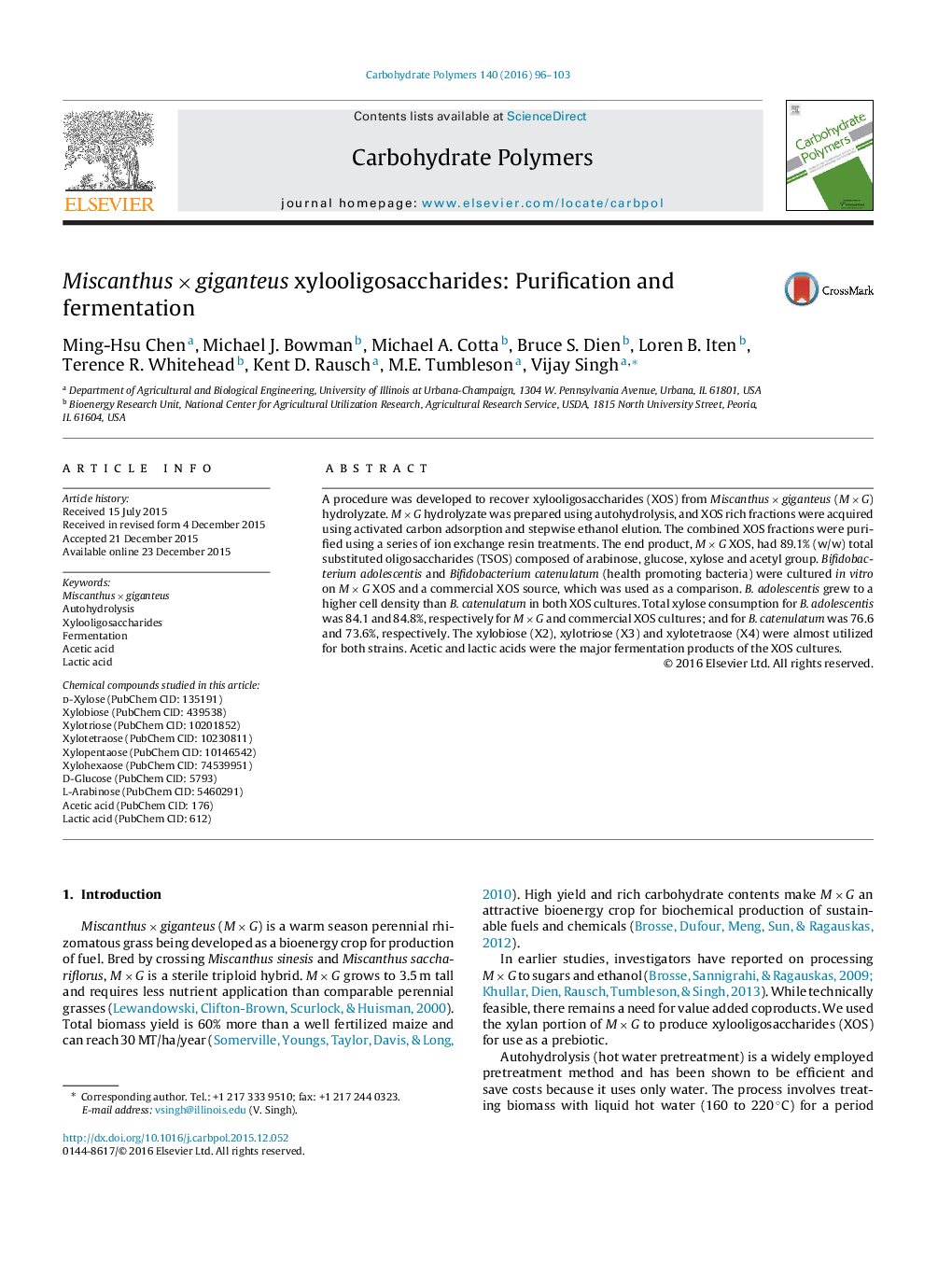| Article ID | Journal | Published Year | Pages | File Type |
|---|---|---|---|---|
| 1383440 | Carbohydrate Polymers | 2016 | 8 Pages |
•A XOS purification procedure was developed for miscanthus hydrolyzate.•Purified M × G XOS had 89.1% (w/w) total substituted oligosaccharides.•M × G XOS had 8.9% X2, 11.3% X3, 8.8% X4, 9.0% X5 and 5.8% X6.•M × G XOS was compared with a commercial source of XOS in vitro.•High utilization of X2, X3 and X4 were observed for two Bifidobacteria strains.
A procedure was developed to recover xylooligosaccharides (XOS) from Miscanthus × giganteus (M × G) hydrolyzate. M × G hydrolyzate was prepared using autohydrolysis, and XOS rich fractions were acquired using activated carbon adsorption and stepwise ethanol elution. The combined XOS fractions were purified using a series of ion exchange resin treatments. The end product, M × G XOS, had 89.1% (w/w) total substituted oligosaccharides (TSOS) composed of arabinose, glucose, xylose and acetyl group. Bifidobacterium adolescentis and Bifidobacterium catenulatum (health promoting bacteria) were cultured in vitro on M × G XOS and a commercial XOS source, which was used as a comparison. B. adolescentis grew to a higher cell density than B. catenulatum in both XOS cultures. Total xylose consumption for B. adolescentis was 84.1 and 84.8%, respectively for M × G and commercial XOS cultures; and for B. catenulatum was 76.6 and 73.6%, respectively. The xylobiose (X2), xylotriose (X3) and xylotetraose (X4) were almost utilized for both strains. Acetic and lactic acids were the major fermentation products of the XOS cultures.
